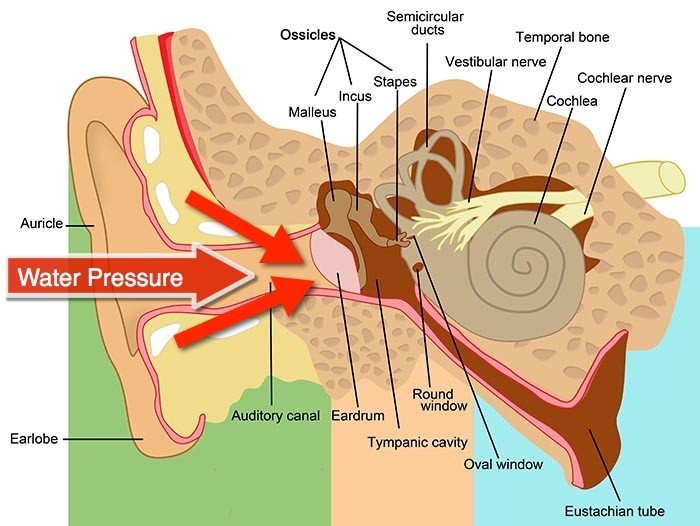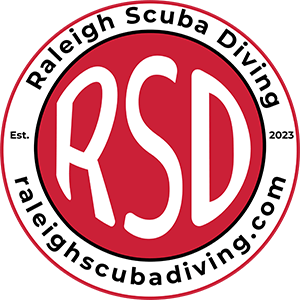
For new divers, mastering the art of equalization can be a daunting task. Equalization is the process of equalizing the pressure inside your ears, sinuses & mask to the surrounding water pressure. Failure to equalize properly can result in discomfort and, in some cases, serious injury. In this blog post we’ll provide you with essential tips to help new & experienced divers master the art of scuba equalization and enjoy their underwater adventures to the fullest.
Start with Proper Training
Before you embark on your scuba diving journey it’s crucial to undergo proper training with a certified instructor. A certified scuba instructor will teach you the essential skills and techniques, including equalization, to ensure your safety and enjoyment underwater. Invest in a reputable scuba diving course to build a strong foundation for your diving adventures.
Understand the Basics of Equalization
Equalization is balancing the pressure inside your ears and sinuses to the increasing water pressure you have as you descend underwater. The mechanics of how this works are simple. Your regulator delivers air to you at the surrounding ambient water pressure. Your sinuses and mask have air pressure that is LESS than the ambient water pressure (because you are descending into higher water pressure, so those airspaces get compressed (squeezed). By equalizing your airspaces with air delivered from your regulator, you are pushing air (at the deeper ambient pressure) into those spaces to prevent the squeeze.
Sinus/Ear Equalization Techniques
The two most common methods of sinus equalization are the Valsalva maneuver and the Frenzel maneuver.
Valsalva Maneuver
Pinch your nose shut and gently blow against the closed nostrils. This action forces air into the Eustachian tubes, equalizing the pressure. NEVER FORCE this technique as it can lead to middle ear injuries. If you are not successful, we recommend you ascend slightly and try again until you can equalize.
Frenzel Maneuver
This advanced technique involves closing the throat and using the tongue and throat muscles to control airflow. It’s more efficient and a recommended technique to learn for scuba divers but takes some practice to execute successfully. The more you dive the easier this technique becomes.
Mask Equalization Techniques
Most of the tine we don’t even consider equalizing our mask. However it is an airspace that needs consideration. The easiest and most common way to equalize your mask on descent is simply exhaling through your nose. If for some reason that does NOT work (perhaps you are congested on one side) you can always break the seal of your mask let a little water in, which will automatically equalize that airspace (but force you to clear your mask, which will also equalize the airspace).
Professional equalization tips
- Our instructors have trained hundreds of students and we’ve picked up a few tricks along the way.
- Snot rockets (closing one nostril and blowing out the other) does wonders to loosen sinuses.
- Wiggling your jaw and even rubbing underneath your ears can help equalization.
- Equalize BEFORE you feel any discomfort or pain.
- Cold water diving makes equalization more difficult so try to minimize up down movement.
- Staying well hydrated makes equalization easier.
- Do NOT take decongestants before diving. If they wear off underwater you are setting yourself up for a reverse block.
- Don’t ever force it. If you can’t equalize there is nothing down there worth a barotrauma.
- Equalize Early and Often – One of the most important equalization tips for new divers is to start equalizing early in your descent and continue to equalize frequently. Don’t wait until you feel discomfort or pain in your ears. Make it a habit to equalize every few feet as you descend to maintain equal pressure. Not only does this reinforce the habit it “exercises” the muscles needed to make future equalization even easier.
- A fun fact is the deeper you go the pressure “gradient” or differential becomes less so you do not need to equalize as often.
- Descend Slowly – Descending too quickly can make equalization more challenging. Take your time when descending and avoid rapid descents when working through any equalization issues. A slow controlled descent allows your body to adjust to the increasing pressure gradually.
- Equalizing While Ascending – Equalization when ascending is usually not required. As ascents should always be controlled and at a rate of no faster than 60 feet per minute the higher pressure air should naturally escape. However, if you feel pain in your sinuses while ascending STOP. There is a condition called a “reverse block” which means higher pressure air is trapped in an airspace and is extremely painful. If you ever find yourself with a reverse block , stop your ascent (provided you have ample gas) and try wiggling your jaw, equalizing and generally try to work the air out of your sinuses by using the same above methods.
- Stay Relaxed – Tension and anxiety can make equalization more difficult. Relaxation is key to successful equalization. Focus on your breathing and remain calm throughout your dive. Tense muscles can constrict the Eustachian tubes, making it harder to equalize.
- Seek Help If You Encounter Problems – If you experience equalization issues or discomfort during a dive, it’s essential to signal your dive buddy or instructor. Ignoring problems can lead to more serious issues like barotrauma. Safety should always be your top priority. If you know you have challenges equalizing be sure to use a line or visual reference on descents to assist in maintaining your depth while equalizing.
Equalization is a fundamental skill for scuba divers and mastering it is crucial for a safe and enjoyable diving experience. With proper training understanding of the techniques and regular practice even new divers can become proficient in equalization. Remember to equalize early and often stay relaxed and always prioritize safety. By following these essential tips you’ll be well on your way to exploring the underwater world with confidence and ease.
Happy diving!




